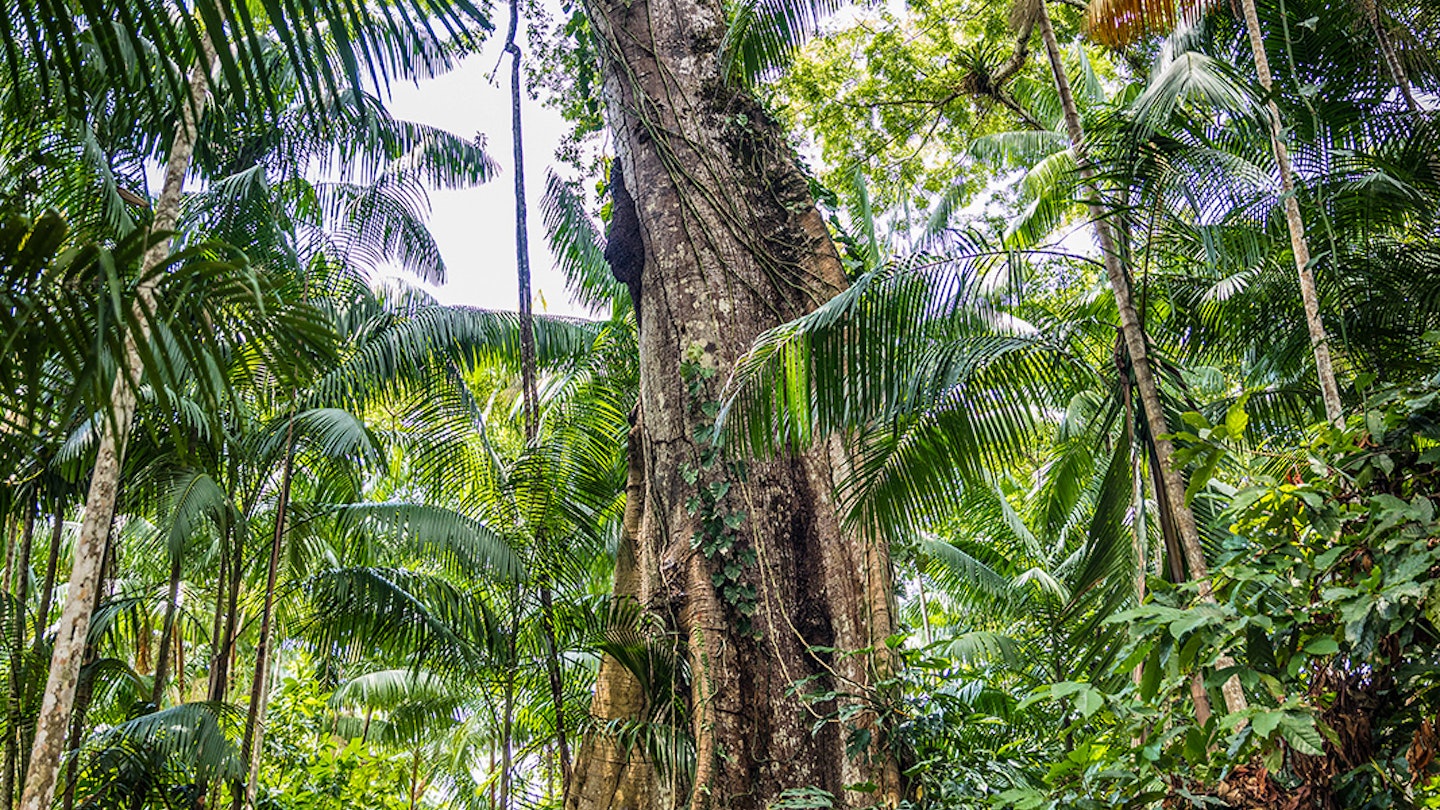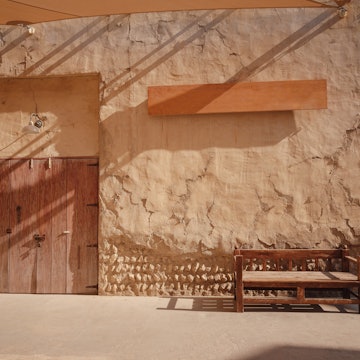

From above, the Brazilian Amazon can seem like a world without end. One of the last truly wild places on the planet, this vast yet vulnerable carpet of green is continental in scale, a world of trackless wastes where rivers are roads, wildlife stalks the forest and people are few.
We've rounded up a list of the top environmentally responsible experiences in this incredible ecosystem – time to start planning your Amazon adventure.
Mamirauá Reserve
This spectacular reserve is built around the principles of sustainability and deep rainforest immersion. Its lodge, Pousada Uakari, perches atop floating logs on a bend in the river, giving a front-row seat for some of the Brazil’s best wildlife-watching experiences. Jaguars live in the trees here when the forest floods from May to July, and eleven primate species inhabit the reserve, among them the weird-but-wonderful white uakari monkey, which is found nowhere else on earth. Boat trips along the river are likely to yield spottings of capuchins and squirrel monkeys, while the call of howler monkeys haunts the forest.
Beneath the water lurk caimans and dolphins, while the birdlife includes macaws, toucans and the other-worldly hoatzin; fishing for piranha is also possible. The lodge has a naturalist on hand who gives nightly lectures on the wildlife that animates so many forest trails here. Despite Mamirauá’s enduring sense of blissful isolation, it’s relatively accessible. If visiting the reserve, transfers to the reserve Pousada Uakari begin in Tefé, a regional town with air and boat connections to Manaus.
It is also possible to visit the reserve independently through the simple Pousada Casa do Caboclo.
Reserva Extrativista Baixo Rio Branco-Jauaperi (Xixuaú)
Few places capture the essence of the Brazilian Amazon quite like Xixuaú. One of the Amazon’s newest reserves – it was only declared in 2018 – it’s a long river trip north of the Rio Negro but worth the days-long journey to get here. Along the way, the inland skein of waterways that make up the Parque Nacional de Anavilhanas include more than 400 islands with flooded forests and beaches. Leaving the Rio Negro behind, the Xixuaú is a lost realm of barely penetrable forests, remote communities and wildlife yet to learn to be fearful of people.
Giant otters hunt in packs through flooded forests, primates swing through the canopy, manatees and dolphins arc through the water at regular intervals, and wild cats – jaguars, ocelots, the arboreal margay – are always a possibility. You might find some of these things elsewhere in the Amazon, but the Xixuaú has no rivals when it comes to that winning combination of remoteness, wildlife abundance and sheer natural beauty all in one place.
The Xixuaú is around 400km north of the Rio Negro – most visitors come from Novo Airão, from where it’s a full day in a speedboat or two to three days on a slower riverboat. Novo Airão is itself ten hours upriver from Manaus. Xixuaú Amazon Ecolodge organizes trips that include transport, lodging and experiences.

Lago Maicá
Santarém may lack the name recognition of Manaus, but it’s a classic riverside town where the Rio Tapajós meets the Amazon. This city has a secret, however: a short boat journey east of town lies Lago Maicá, a gorgeous floodplain that makes for some of the most enjoyable river excursions anywhere in the Amazon. Santarém may lie just over the horizon, but it feels a world away out here, where pink dolphins breach the surface, sloths sleep in riverbank trees and anaconda sightings are always a possibility. Sightings of macaws and toucans are almost guaranteed. Come at sunset, but, better still, take an overnight boat trip here to sleep onboard – the sunrises here are truly magical.
Gil Serique organizes overnight boat excursions from Santarém to Lago Maicá.

Floresta Nacional do Tapajós
Not every journey into the Amazon involves a multi-day expedition upriver. This soaring stand of primary rainforest lies equidistant between Santarém and the languid river resort of Alter do Chão, and is easily accessible by road. And while you may see wildlife – jaguars, howler monkeys, squirrel monkeys and capuchins all inhabit the forest here – it’s the trees that really impress.
The samaúma trees here are immense, extraordinary epics that even 20 people holding hands can’t encircle, and which reach impossibly high above the canopy. Forest trails and overnight camping expeditions, as well as visits to villages such as Maguarí, Jamaraquá and São Domingo along the banks of the Rio Tapajós are all highlights. And it’s worth remembering that this is how endless tracts of Amazon once appeared.

Rio Urubu
When most people arrive in Manaus, they think they’ve reached the Amazon. Yes, this Amazonian city does have a certain tropical charm, but it’s the antithesis of a forested wilderness. Many head to Presidente Figueiredo, two hours north of the city, to wander its network of caves and waterfalls away from the hubbub of the city. But half of Manaus seems to escape here on weekends, which kind of undermines the whole reason you came.
Away to the east of the city, the Rio Urubu, an Amazon tributary, allows you to experience the intact rainforest ecosystems, all within a half-day’s drive of the city. The wildlife here is plentiful, with primates in the canopy, rich birdlife everywhere and a range of activities from canoe trips, jungle hikes and trips to local villages. And just through the trees lies the mighty main branch of the Amazon.
To plan a visit here, contact Amazon Antonio Jungle Tours, based in Manaus.
Check out adventure tours for every traveller from our trusted partners.













